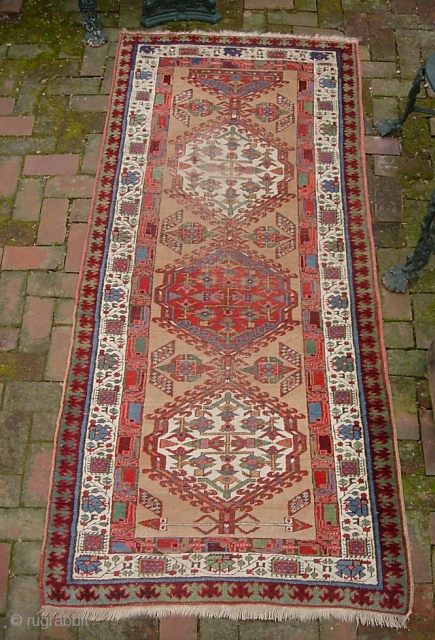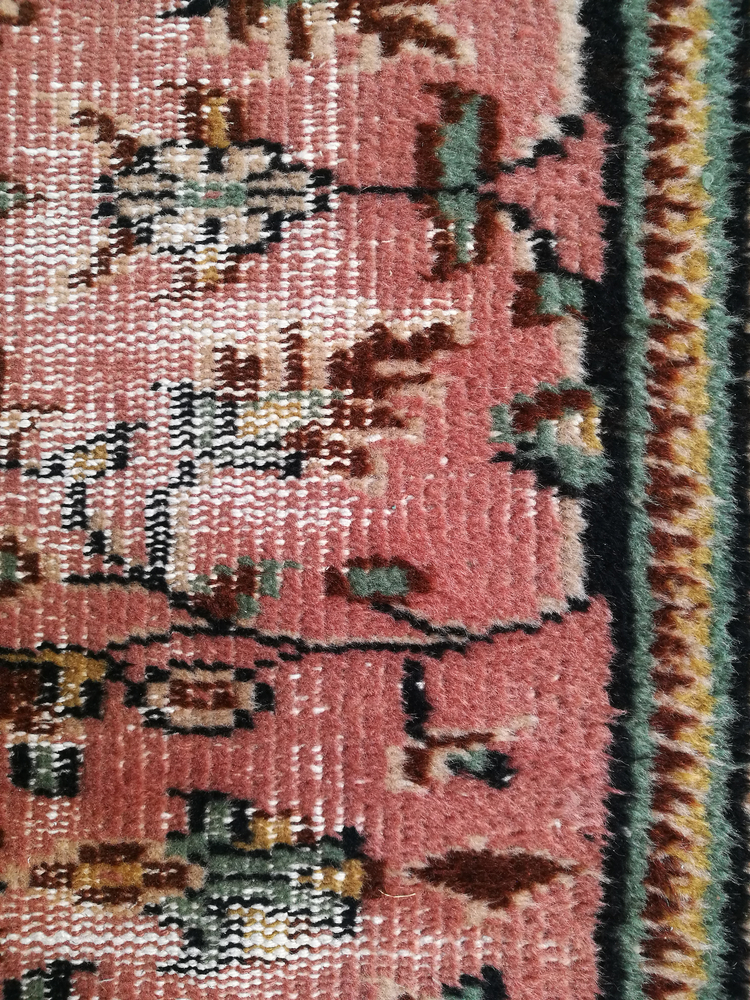When buying an antique rug you might hear terms like “corrosion”, “rug oxidation” and “wear”. These represent different types of change that occur in antique rugs over time. However, each one is very different. In rugs, the presence of oxidation or corrosion give a rug an aged look and patina. This is a great way of knowing you have an authentic antique rug.
Today we’re going to discuss what oxidation, corrosion and wear are, and how to use them to evaluate a rug.
How Metals in the Dyeing Process Cause Oxidation and Corrosion
Normally, people associate oxidation and corrosion with metal objects, not rugs. When metal corrodes or oxidises, it is reacting to the oxygen in the air. When the metal is iron, it results in rust. In the case of copper, it oxidises to green and breaks down with time.
When talking about oxidation and corrosion in rugs, we are still talking about metal. Some natural dyes, used in rug making, have metals in them, including iron, copper, tin, aluminium, and chromium. This allows the colour to adhere to the fibre. Metals or metallic slats makes the dye more permanent and fast, which means the rug won’t fade as much over time.
Antique rugs use iron and copper, as they were the most common metals utilised in the colour dyeing process. Copper is usually soaked in vinegar to extract cupric acetate. This is used to dye the cloth. Iron, however, usually comes in the form of ferrous sulphate. Rug weavers use these metals as a bridge between the fibre and the colour molecule, allowing the dye to create a tighter bond.
How Does Oxidation and Corrosion Change a Rug?
Dyes create with metallic salts create beautiful, harmonious tones. However, over time, these metals break down within the dyes, oxidising and corroding. When they break down, they also break down the wool or silk fibres with them, which causes the pile to become brittle and flake off a little. When running your hand over an antique rug, you might find spots that are rougher or have a lower pile height than other areas. This is especially likely in darker coloured areas of the rug design.
Corrosion can occur over the whole rug but it’s rarely even as each different dye in the rug will have a different concentration of metal. As a result, corrosion is only noticeable in some colours, with black and brown being more common as they often need more iron to create.
This flaking of the pile can also give a rug a high-low appearance in antique rugs. In some low pile areas you might even see the white warp and weft threads peeking through.
The Difference Between Wear and Corrosion
Corrosion usually differs between different colour areas. Some areas will be more worn away than others, creating the high-low effect. Wear, however, is more uniform across the surface where people are walking – especially in high traffic areas – and is not based on colour.
While wear in rugs can look similar to corrosion, it is not the same. A rug wears simply from people walking across it and as people walk over it for years and years, little pieces of the wool break off and, eventually, the white warp will begin to show through. On rugs with heavy wear, the fringe and ends will also tend to be ragged or very short, too.
Corrosion and wear are not necessarily bad things in antique rugs. They are what gives the rug that “shabby-chic” look and character that synthetic rug makers strive to create. This lets you know it is an authentic antique rug.
Antique rugs are beautiful pieces of art and are often family heirlooms, passed down through the family. Oxidation, corrosion and wear all work to create a unique piece that will take the pride of place in your home. But because of their unique make up and dyes, antique rugs need to be cleaned and treated carefully. If you have an antique rug in need of some tender love and care, contact the team at Woods Rug Laundry. We have years of experience in caring for and cleaning antique rugs, so you know your piece is in safe hands. Call now for a quote!

